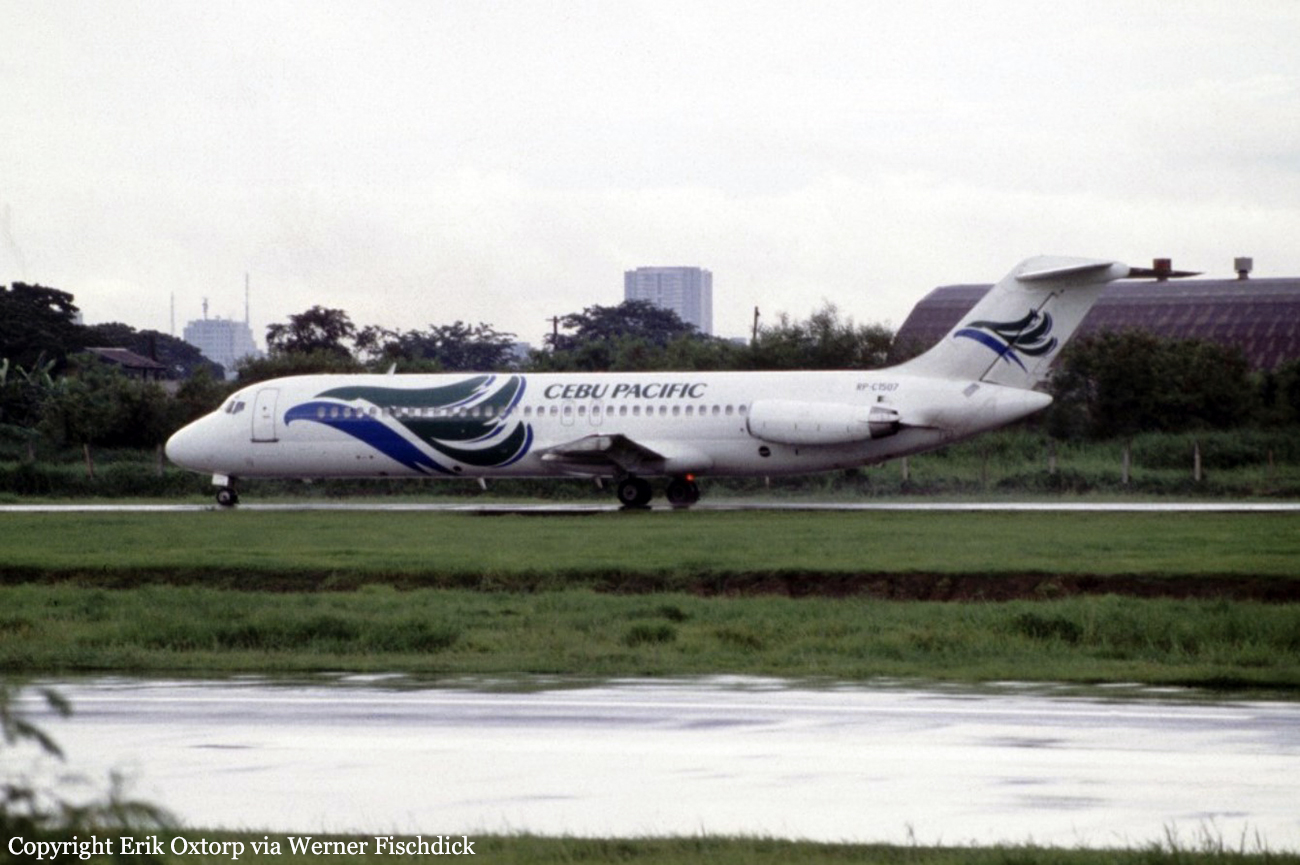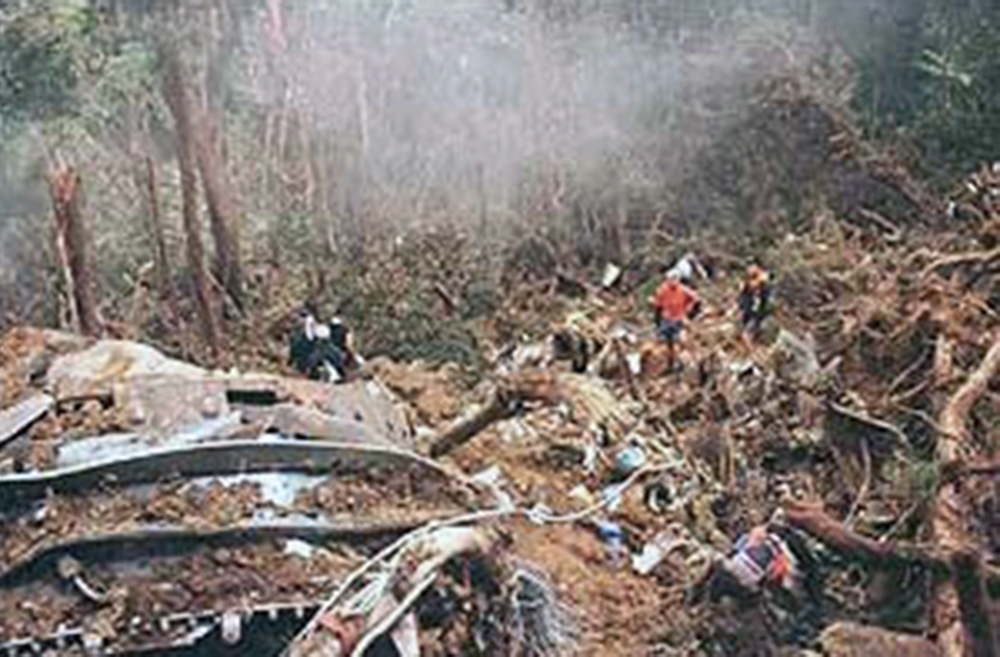Country
Operator Image

Crash of an ATR72-212A in Manila
Date & Time:
Jul 28, 2010 at 1515 LT
Registration:
RP-C7254
Survivors:
Yes
Schedule:
Tuguegarao – Manila
MSN:
828
YOM:
2008
Flight number:
5J509
Crew on board:
0
Crew fatalities:
Pax on board:
0
Pax fatalities:
Other fatalities:
Total fatalities:
0
Circumstances:
Cebu Pacific Air flight 5J509, an ATR 72-500, took off from Tuguegarao Airport, Philippines, bound for Manila-Ninoy Aquino International Airport. The first officer was the Pilot Flying (PF) while the captain was the Pilot Not Flying (PNF). Approaching Manila, the flight was under radar vector for a VOR/DME approach to runway 24. At 7 miles on finals the approach was stabilized. A sudden tailwind was experienced by the crew at 500 feet radio altitude (RA) which resulted in an increase in airspeed and vertical speed. The captain took over the controls and continued the approach. Suddenly, the visibility went to zero and consequently the aircraft experienced a bounced landing three times, before a go-around was initiated. During climb out the crew noticed cockpit instruments were affected including both transponders and landing gears. They requested for a priority landing and were vectored and cleared to land on runway 13. After landing the aircraft was taxied to F4 where normal deplaning was carried out. No injuries were reported on the crew and passengers.
Probable cause:
Primary Cause Factor:
- Failure of the flight crew to discontinue the approach when deteriorating weather and their associated hazards to flight operations had moved into the airport (Human Factor)
Contributory Factor:
- The adverse weather condition affected the judgment and decision-making of the PIC even prior to the approach to land. With poor weather conditions being encountered, the PIC still continued the approach and landing. (Environmental Factor)
Underlying Factor:
- As a result of the bounced landing, several cockpit instruments were affected including both transponders on board. One of the nosewheels was detached and all the landing gears could not be retracted. Further, the integrity of the structure may have been affected and chance airframe failure was imminent. With all of these conditions, the Captain still opted to request for a priority landing when emergency landing was needed.
- Failure of the flight crew to discontinue the approach when deteriorating weather and their associated hazards to flight operations had moved into the airport (Human Factor)
Contributory Factor:
- The adverse weather condition affected the judgment and decision-making of the PIC even prior to the approach to land. With poor weather conditions being encountered, the PIC still continued the approach and landing. (Environmental Factor)
Underlying Factor:
- As a result of the bounced landing, several cockpit instruments were affected including both transponders on board. One of the nosewheels was detached and all the landing gears could not be retracted. Further, the integrity of the structure may have been affected and chance airframe failure was imminent. With all of these conditions, the Captain still opted to request for a priority landing when emergency landing was needed.

Crash of a Douglas DC-9-32 on Mt Sumagaya: 104 killed
Date & Time:
Feb 2, 1998 at 1100 LT
Registration:
RP-C1507
Survivors:
No
Schedule:
Manila – Tacloban – Cagayán de Oro
MSN:
47069
YOM:
1967
Flight number:
5J387
Crew on board:
5
Crew fatalities:
Pax on board:
99
Pax fatalities:
Other fatalities:
Total fatalities:
104
Aircraft flight hours:
73784
Circumstances:
The aircraft departed Manila-Ninoy Aquino Airport at 0916LT on a regular schedule flight to Cagayán de Oro. The crew made an unscheduled stop at Tacloban Airport to deliver spare tires for another Cebu aircraft. It took off from Tacloban Airport at 1002LT and continued to Cagayán de Oro at FL115. While descending in marginal weather conditions, the aircraft struck the slope of Mt Sumagaya (2,234 metres high) located about 54 km northeast of Cagayán de Oro Airport. First rescuers arrived on site about 24 hours later and the wreckage was found in an isolated area about 150 metres below the summit. The aircraft disintegrated on impact and all 104 occupants were killed, among them five foreigners including one Swiss citizen. At the time of the accident, weather conditions were marginal with clouds and strong winds.
Probable cause:
It was determined that the aircraft was off track by three km at the time of the accident. The following findings were reported:
- Poor operational controls by Cebu Air,
- Pilot training and practices were inadequate and unacceptable,
- The operator was non compliant with crew training procedures,
- More than half of the 17 procedures analyzed by the operator were deficient,
- Aircraft components were still in use after their expiration date.
- Poor operational controls by Cebu Air,
- Pilot training and practices were inadequate and unacceptable,
- The operator was non compliant with crew training procedures,
- More than half of the 17 procedures analyzed by the operator were deficient,
- Aircraft components were still in use after their expiration date.


